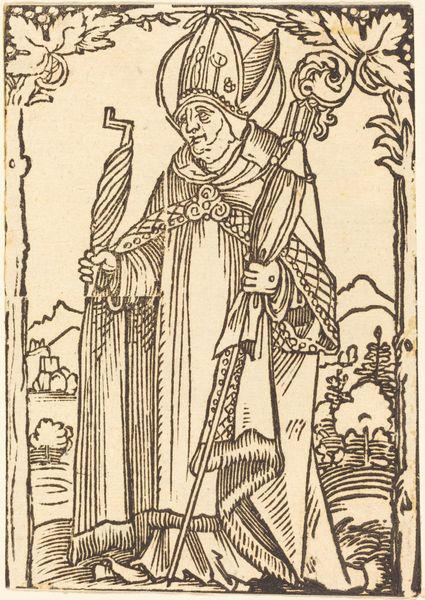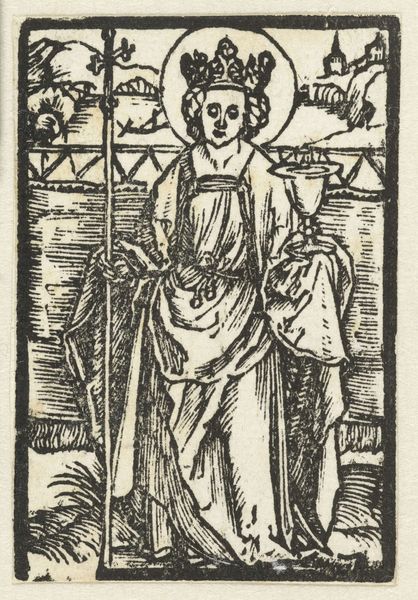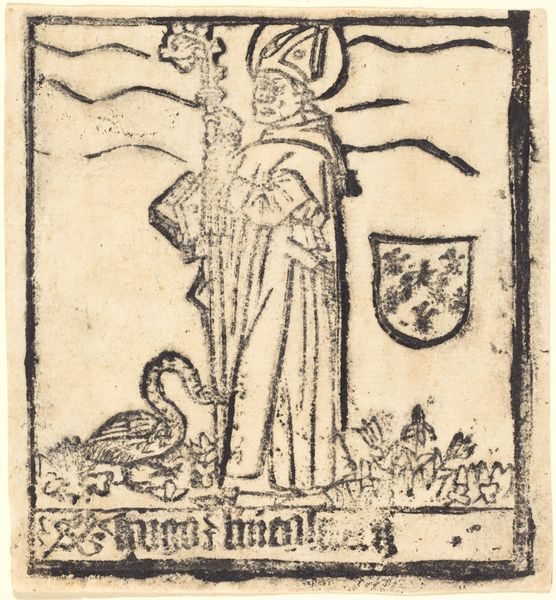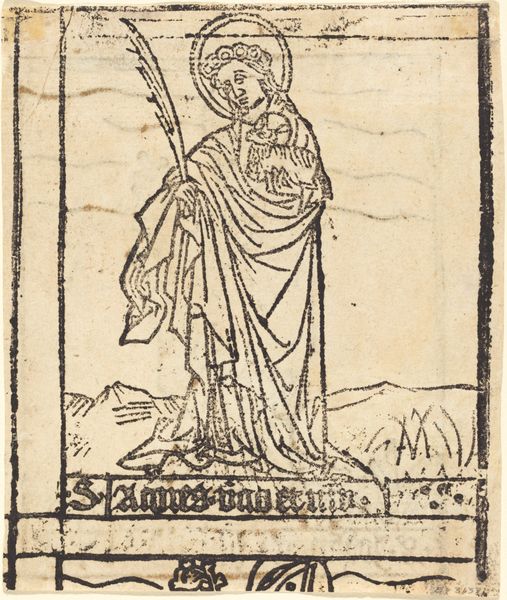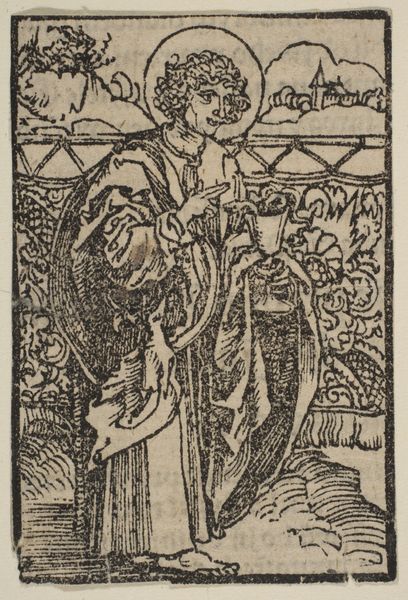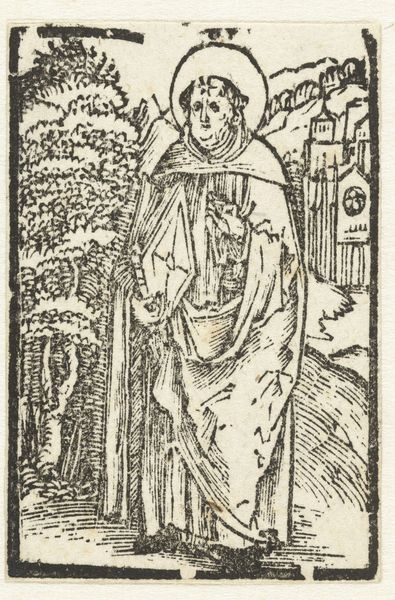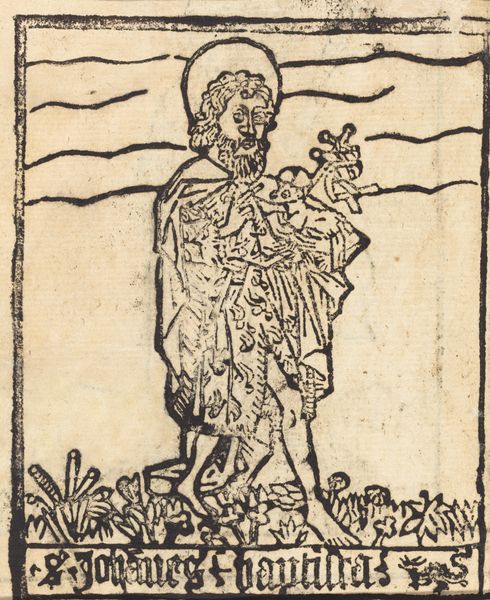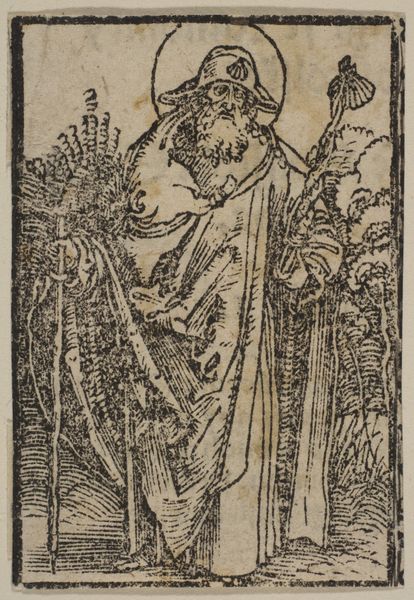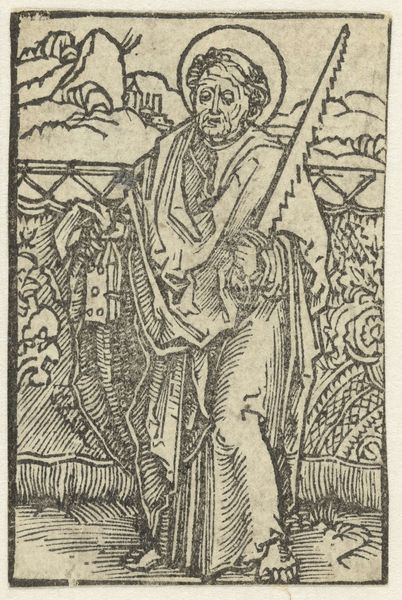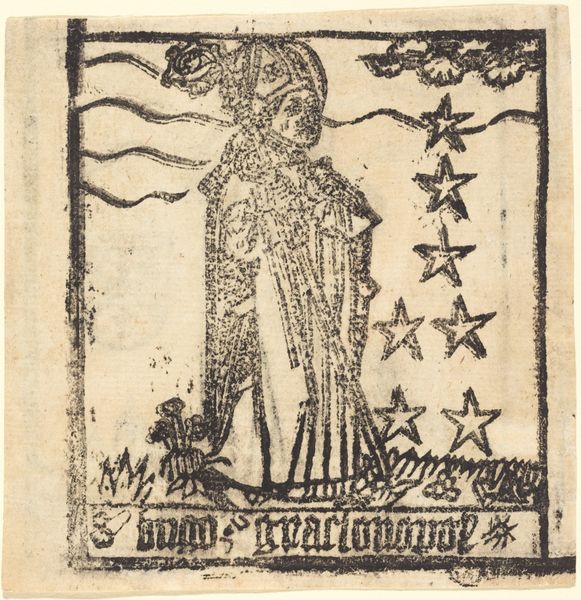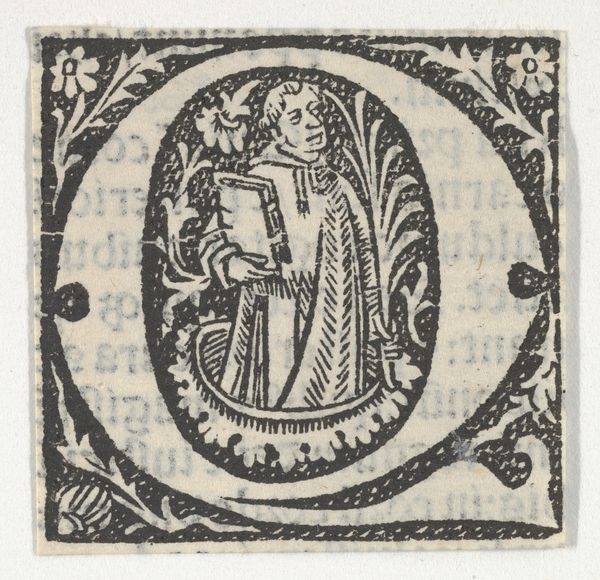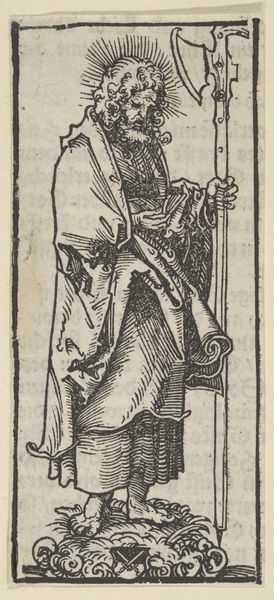
print, woodcut
#
ink drawing
#
medieval
#
pen drawing
# print
#
figuration
#
woodcut
#
line
Copyright: National Gallery of Art: CC0 1.0
Curator: This is an image of Saint Bruno, a woodcut probably dating from between 1460 and 1480. Look at the strength of line in this simple medium. Editor: It feels rather stern, almost severe. The figure, surrounded by that dramatic scroll, is rigid and formal. But I also see fragility in the starkness of the image. Curator: Yes, it captures the austerity associated with Saint Bruno, founder of the Carthusian order. Notice the mitre at his feet: a symbolic rejection of ecclesiastical honors and power. Editor: A clear statement against corruption and excess within the Church. It’s interesting to see even devotional art engaging with social critique. The choice to depict Saint Bruno in such a way, with his gaze looking upwards and away from the bishop's mitre, is striking. Curator: The saint is holding what looks like a sprig of herbs, an offering or perhaps symbolic of healing, very subtle yet clear. This print certainly relies on conventional symbolic shorthand. I mean the halo, which almost takes the shape of radiating flames around his head. This visual symbol signified divinity, though often adapted for sacred figures within Christianity. Editor: How does an artwork like this function in society, and for whom? This image likely served as a personal devotional tool or, being a print, may have been widely distributed as propaganda for monastic life and for people following in his ways. Curator: Indeed. The image, as a sign, is a visual prompt designed to incite an emotional and intellectual response and invite participation with Bruno's legacy. And the inclusion of what appears to be his coat-of-arms further contextualizes the saint, linking the man to historical lineage. Editor: Thank you. This close analysis highlights how historical context allows a clearer reading of this representation. Curator: For me, delving into those iconographic traditions makes me understand how symbols persist and change their meanings over time. I learned a lot too.
Comments
No comments
Be the first to comment and join the conversation on the ultimate creative platform.
